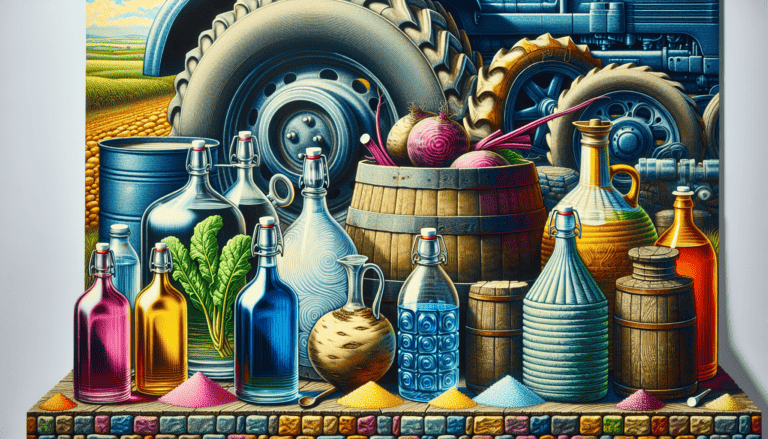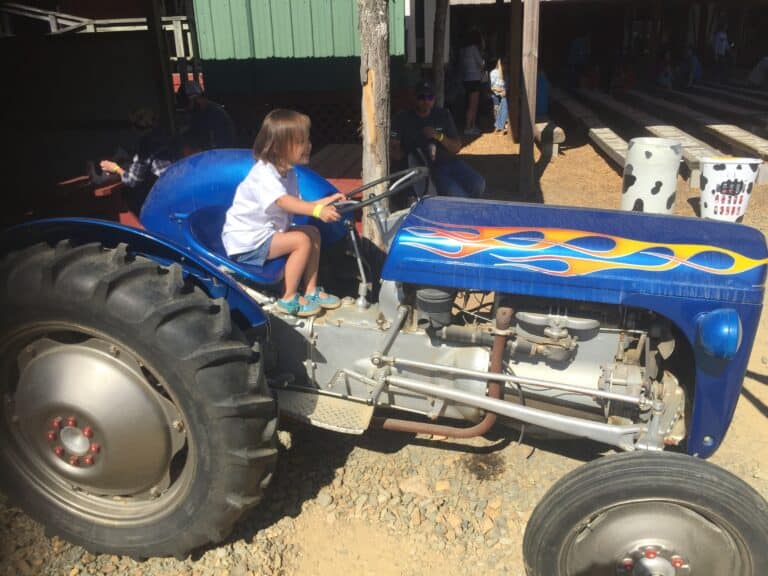Choosing the Right Tractor: Your Ultimate Guide to Deciding What Kind of Tractor Should I Buy
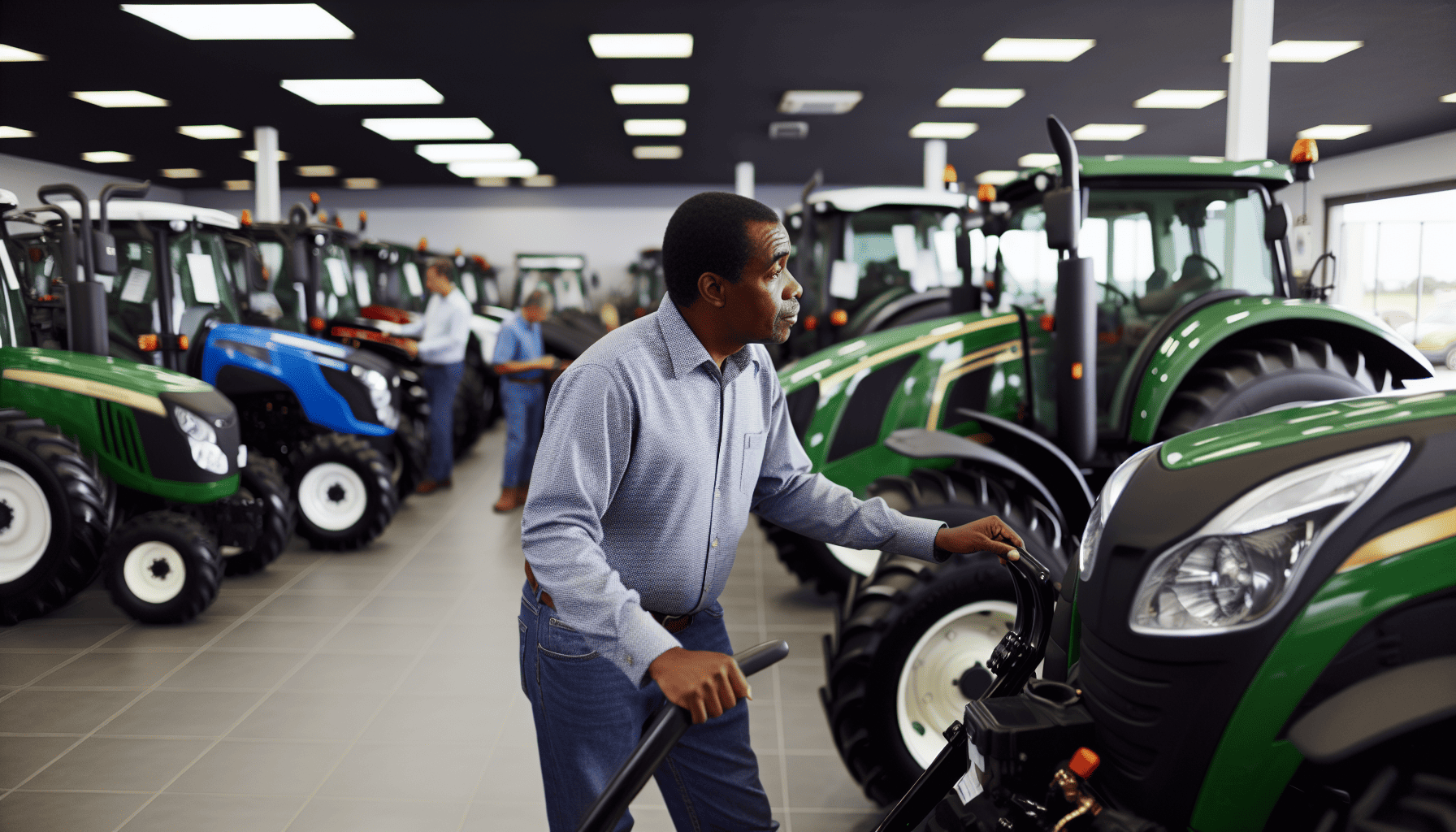
Looking for a tractor can be overwhelming, but the question ‘what kind of tractor should I buy’ doesn’t have to linger in your mind any longer. Tailored to land size, desired tasks, budget, and essential features, this article is your streamlined guide. Effortlessly navigate through your options and gain the confidence to make a well-informed decision on what type of tractor to buy for your agricultural needs.
Key Takeaways
- When buying a tractor, consider the size and terrain of your property, the tasks you’ll use it for, and how often you’ll use it to determine the right size, horsepower, and attachments needed.
- There’s a spectrum of tractor sizes, from sub-compact to full-size, each suited for different tasks and property sizes, and it’s crucial to choose one that can handle the desired attachments and work.
- The tractor buying process involves practical considerations such as budget, financing, insurance, and maintenance, as well as brand selection for reliability and ease of acquiring parts and service.
Determining Your Tractor Needs

When contemplating the purchase of a tractor, it’s crucial to first consider your specific requirements. The nature of your terrain, the purposes for which you’ll use the tractor, and the volume of work you anticipate are key factors that will heavily influence your choice. Whether maintaining a verdant garden or overseeing expansive farmland, identifying tasks such as mowing, tilling or snow removal is essential as they each necessitate tractors with varying sizes and horsepower strengths. The kinds and weights of implements intended for use must be factored in to determine an appropriate power range.
To explore these points further.
Assessing Property Size and Terrain
When deciding on the appropriate tractor for your land, the property’s size and topography play critical roles in identifying the necessary horsepower and stability characteristics of your machine. Tractors needed to service expansive areas must possess greater horsepower to cope with larger plots effectively. Similarly, if you are dealing with sloped or hilly landscapes, it is imperative that tractors be equipped with enhanced stability measures like a wider wheelbase or reduced center of gravity.
Regardless if you own extensive stretches of flat terrain or undulating rural acreage, choosing a tractor adept at navigating through these specific environmental conditions is essential.
Identifying Key Tasks and Attachments
Tractors, including garden tractors, are like Swiss Army knives of the farming world, equipped to handle a wide range of tasks from precision mowing and brush clearing to snow removal and posthole digging. However, aligning tasks with the appropriate attachments is key to optimizing your tractor’s efficiency and effectiveness. For instance, front loaders are perfect for moving materials, while rotary cutters are ideal for clearing weeds.
Models such as the Kubota B2320 Narrow and the MF GC1700 Series are great examples of compact tractors that offer adaptability with various implements, catering to the diverse needs of small farm owners. In fact, a compact tractor like the Kubota B2320 Narrow can be an ideal choice for those looking for versatility and efficiency in their farming operations.
Frequency of Use and Longevity Expectations
How often you plan to use your tractor and how long you expect it to last are key considerations when deciding between new and used tractors. For instance, a used tractor could be a more suitable option for hobby farmers or lifestyle country dwellers, whose tractors are not used frequently or for prolonged hours daily. Not to mention, the money saved from opting for a used tractor can be invested in additional equipment or property improvements.
Remember, tractors typically have a lifespan ranging from 8,000 to 10,000 hours of use, and this can be extended further through regular and proper maintenance.
The Spectrum of Tractor Sizes
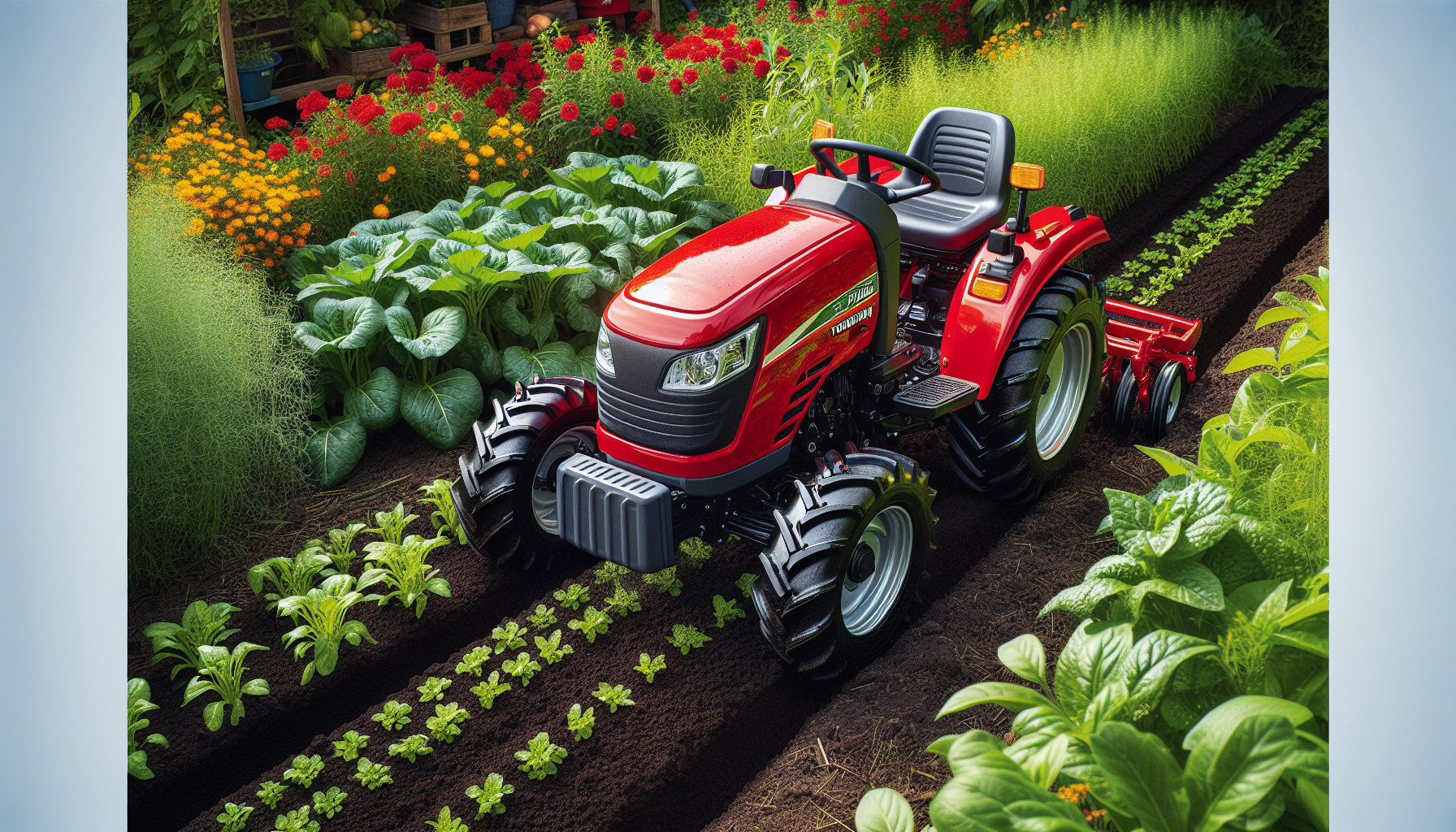
Having assessed your tractor needs, you can now explore the various tractor sizes available. Manufacturers typically offer tractors in various classes such as:
- Sub-compact
- Compact
- Mid-size
- Full-size
Each size is suited to different tasks and property sizes. But choosing the right size involves more than just matching it to your land area; it’s also about finding a tractor that can handle the attachments and tasks you have in mind.
Exploring the different size categories can help you find the most suitable fit.
Sub Compact Tractors
Should you be in the market for a powerful yet compact machine, sub-compact tractors should pique your interest. These units are typically more petite and nimble, which makes them perfect for precise operations on limited acreage. In spite of their diminutive stature, these tractors offer multifunctionality with the ability to attach a front-end loader as well as featuring an independent PTO and 4WD capabilities.
Among popular choices are Massey Ferguson’s MF GC1700 Series and Kubota BX23S that excel at lawn maintenance and light utility jobs. John Deere’s 1:5. Series lawn tractors double as both a mower and multi-use vehicle capable of working with various implements designed for assorted tasks.
Compact Utility Tractor
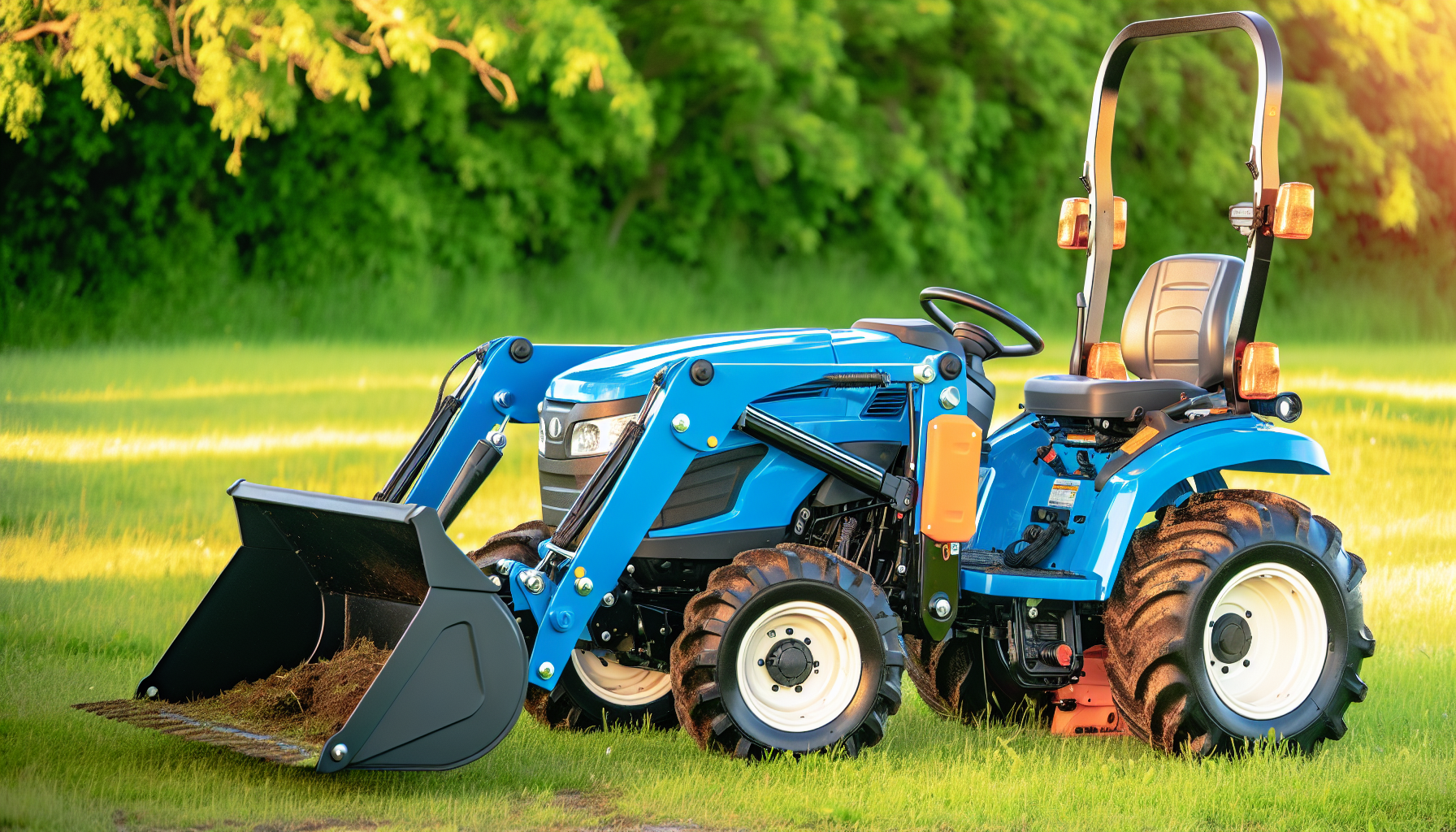
For those seeking a balance between power and size, compact utility tractors are a great choice. These tractors are designed for a variety of tasks on small farms, including:
- Mowing
- Light-duty material handling
- Use with small farm implements
- Transportation of goods within the farm
- Navigating narrow spaces in orchards and vineyards.
Brands like Kubota and John Deere, both well-known tractor manufacturers, offer new tractor models in their compact utility tractors lineup, featuring powerful diesel engines, a range of horsepower options, and the ability to customize with various attachments. These brands are popular in the tractor world for their quality and reliability.
Mid Sized Tractors and Larger
Should your agricultural operations require enhanced power and adaptability, consider investing in mid-sized to large farm tractors. These powerful machines deliver between 40 to over 100 horsepower, ensuring they have more than enough muscle for rigorous farming duties including transporting equipment and materials, as well as mowing, ploughing, and tilling tasks.
Tractor models such as the Massey Ferguson MF 2800 M Series or the John Deere 4 Series not only provide these advanced capabilities, but also allow for the integration of additional amenities designed to boost operator comfort—such as enclosed cabs suitable for working in harsh weather conditions.
Selecting a Tractor Brand and Model
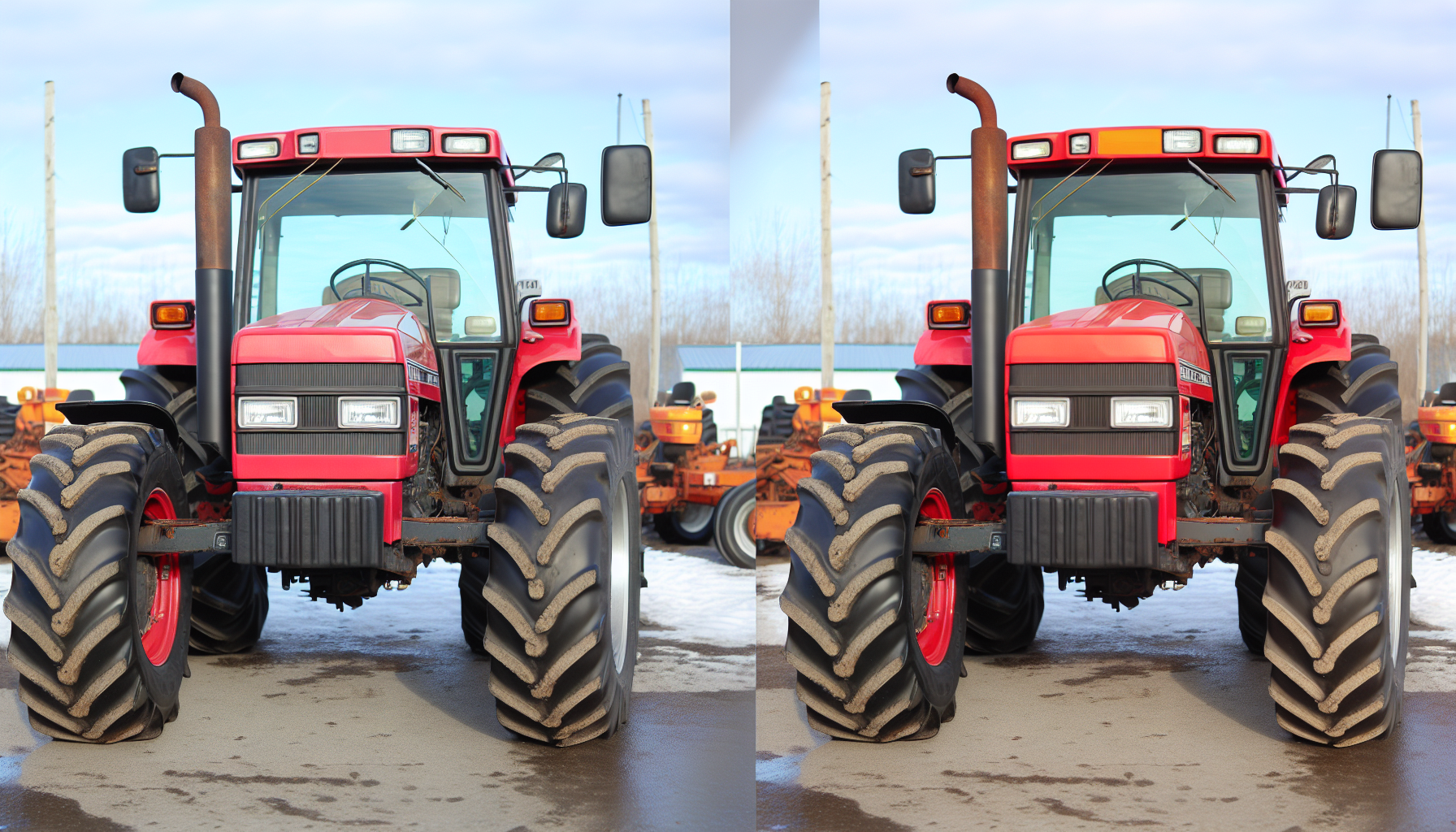
Choosing the appropriate tractor involves more than just considering size and power. It also means selecting a trustworthy brand and model that can impact performance, spare parts availability, and the efficiency of your entire farming operation. Esteemed brands such as John Deere presenting an extensive assortment of models tailored to different farm sizes and activities, you might feel overwhelmed by the possibilities. Rest assured that we’re ready to assist you in making a well-informed choice.
Popular Brands and Dealership Support
It is recommended to select tractors from reputable manufacturers who have local dealerships, as this ensures easier availability of service and spare parts. John Deere and Kubota are among such brands that provide a diverse selection of tractor models featuring user comfort and ergonomic design, which has made them favorites for numerous farmers.
Consider the benefit of choosing brands with widespread dealer networks since they can offer enhanced accessibility to service and parts — an essential factor to take into account whether you’re in the market for a new or pre-owned tractor.
Comparing New vs. Used Tractors
When it comes to choosing between new and used tractors, both options have their pros and cons. Here are some factors to consider.
- New tractors offer the latest technology and features.
- Used tractors can meet current performance standards at a more affordable price point.
- New tractors often come with a manufacturer’s warranty that provides peace of mind, which is typically not available with used tractors.
And let’s not forget the potential financial benefits of used tractors, with competitive financing rates and strong resale values, especially for brands like John Deere and Kubota.
Evaluating Tractor Features
Beyond the brand and new versus used considerations, evaluating the features of your prospective tractor is equally important. Tractors typically come with two main types of transmissions: gear and clutch-style transmissions, or hydrostatic transmissions. Hydrostatic transmissions allow for smoother acceleration and deceleration without the need to switch gears, providing a seamless experience for the operator. Plus, these types of transmissions enhance control and efficiency during front loader operations. However, they generally require changing hydraulic fluid and filters as part of routine maintenance to ensure long-term durability.
Practical Considerations When Buying a Tractor
After assessing your requirements and considering various choices, it is crucial to consider real-world considerations such as:
- Financial plan
- Payment options
- Coverage plans
- Upkeep
Such elements are pivotal in deciding on a tractor purchase and can profoundly influence the entirety of your agricultural activities.
Budgeting for Your Tractor Purchase
The first important step is to establish a budget for your tractor purchase. Compact tractors can range in price from $15,000 to $23,000 depending on options and models, while mid-size tractors are comparable in price to a well-appointed 1-ton pickup truck. It’s important to examine both farm and household budgets to understand the full financial impact and allocate an appropriate amount for a tractor purchase.
A proactive approach to financial planning, such as setting realistic savings goals, can smooth the path to managing this investment.
Tractor Financing and Insurance
Looking into financing options and insurance coverage for your tractor is another imperative step. Here are some reasons why:
- Financing can include the cost of attachments and accessories, offering the convenience of a single financial package for the entire purchase.
- Insurance for tractors is crucial as it can cover the costs of repairing or replacing the tractor.
- Insurance can also handle liability for property damage or personal injuries.
- Insurance can protect against theft.
Remember, tractor insurance can extend beyond standard farm coverage to include specific hazards and environmental damages.
Maintenance and Upkeep
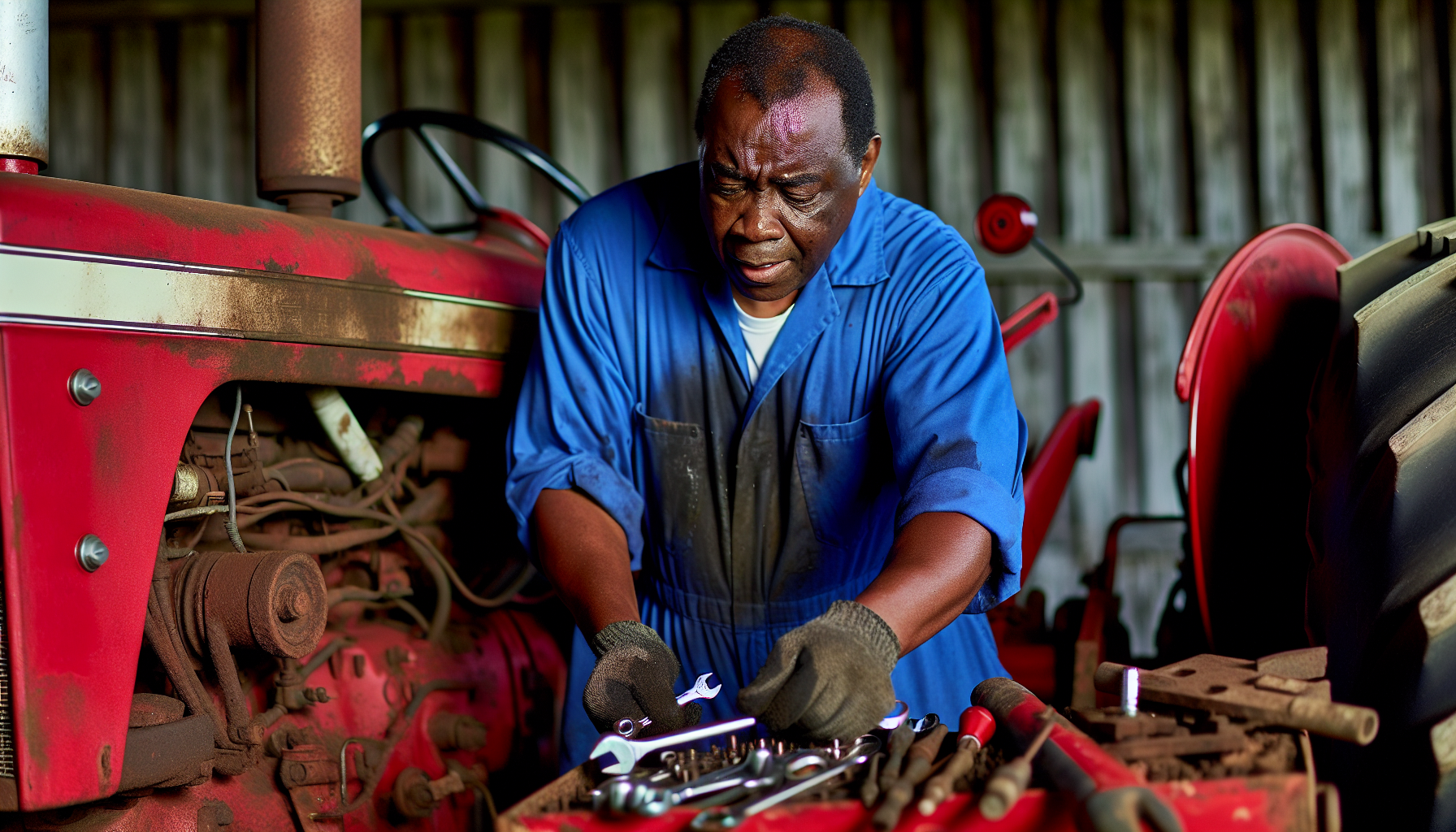
Finally, bear in mind the importance of regular maintenance and upkeep in ensuring your tractor’s longevity and performance. Ease of access to service and parts availability from your local dealer is a crucial factor when maintaining a tractor. Regular maintenance must include:
- Oil changes
- Filter replacements
- Thorough inspections
- Adherence to the tractor’s owner’s manual maintenance schedules
Conducting regular pre-operational checks for ag tires, including turf tires, tire inflation, brakes, steering, and safety systems, can also greatly enhance a tractor’s operation safety and efficiency.
Additional Features to Enhance Your Tractor Experience
Beyond the realm of pragmatics, it’s equally important to refine your experience with a tractor. This piece of machinery is more than just an apparatus—it’s a reflection of who you are as either an agriculturist or landholder. Delving into various extra attributes can elevate aspects such as convenience, security, productivity and provide avenues for personal tailoring.
Comfort and Convenience Add-ons
Enhancing operator comfort is fundamental to a positive tractor experience. Features like air conditioning, heated cabs, and ergonomic seats can significantly improve the user experience during long hours of operation. For instance, tractors like the Kubota B2320, BX23S, and B2650/B3350 series, along with Massey Ferguson’s MF 1800 M and MF 2800 M Series, offer advanced comfort features like climate-controlled cabs, noise insulation, and optional transmissions.
Not to mention, noise reduction features such as soundproof cabs or the use of personal hearing protection are important for protecting the operator’s health and well-being during extended periods of tractor use.
Safety and Efficiency Enhancements
Safety is paramount when operating heavy machinery like tractors. Features such as Roll-over Protective Structures (ROPS) and better lighting for night work are essential for enhancing the safe operation of tractors.
In addition, enhancing stability by spacing the front and rear wheels of the tractor as far apart as practical reduces the risk of side overturns, while hitting implements properly to the drawbar can prevent dangerous rear overturns during towing. Considering the loader lift capacity is also essential for maintaining balance and preventing accidents, especially when operating with heavy loads on the rear wheels.
Moreover, we shouldn’t overlook the value of well-designed and maintained lighting systems, including LED lights, in ensuring safety during operations in low-light or nighttime conditions.
Customization Options
Giving your tractor a personal touch can make it distinctly yours. Personalization options for tractors include:
- Selecting appropriate tires tailored to the work you’ll be undertaking
- Customizing with paintwork and seat covers that echo your individual style or corporate identity
- Equipping the tractor with attachments suitable for light mining endeavors or infrastructure projects, ensuring versatility through numerous accessory choices
The scope of customizations available is practically limitless.
Custom steps have even been designed for pets’ comfort, making them easier on their paws.
Summary
In conclusion, choosing the right tractor is a complex yet rewarding process. By understanding your specific needs, exploring the spectrum of sizes, selecting a reliable brand and model, considering practical aspects like budget, financing, and maintenance, and enhancing your tractor experience with additional features, you can ensure that your tractor is not just a machine, but a true partner in your farming or property management journey.
Frequently Asked Questions
What size tractor do I need for 2 acres?
For managing 2 acres, a sub-compact tractor in the range of 15 to 25 horsepower is ideal because it provides flexibility and ease of operation for activities such as mowing, gardening, landscaping, and clearing snow.
What is the best tractor to start with?
For those initiating their journey in lawn maintenance and property care with a compact tractor, the 1025R of the 1 Series Family represents an outstanding selection. It provides superb value along with flexible abilities for various implements.
What are the key factors to consider when buying a tractor?
It is crucial when purchasing a tractor to identify your unique requirements which include the size of the property, type of terrain, variety of tasks you’ll perform with it, and how often it will be used. Consider the different sizes available in tractors, opt for a brand and model known for its reliability, and also give consideration to pragmatic details such as financial planning for purchase (budgeting), potential financing options if necessary, and future maintenance considerations.
How does property size and terrain influence the choice of tractor?
The size of your property impacts the horsepower needed for efficient land management, while challenging terrain like slopes requires a tractor with enhanced stability.
So, consider property size and terrain when choosing a tractor to ensure optimal performance.
What are the benefits of sub-compact and compact utility tractors?
Sub compact tractors excel in precision tasks on limited acreage thanks to their diminutive stature and agility. In contrast, compact utility tractors are versatile enough to undertake a range of jobs on petite homesteads such as grass cutting and handling materials that are not too heavy.

